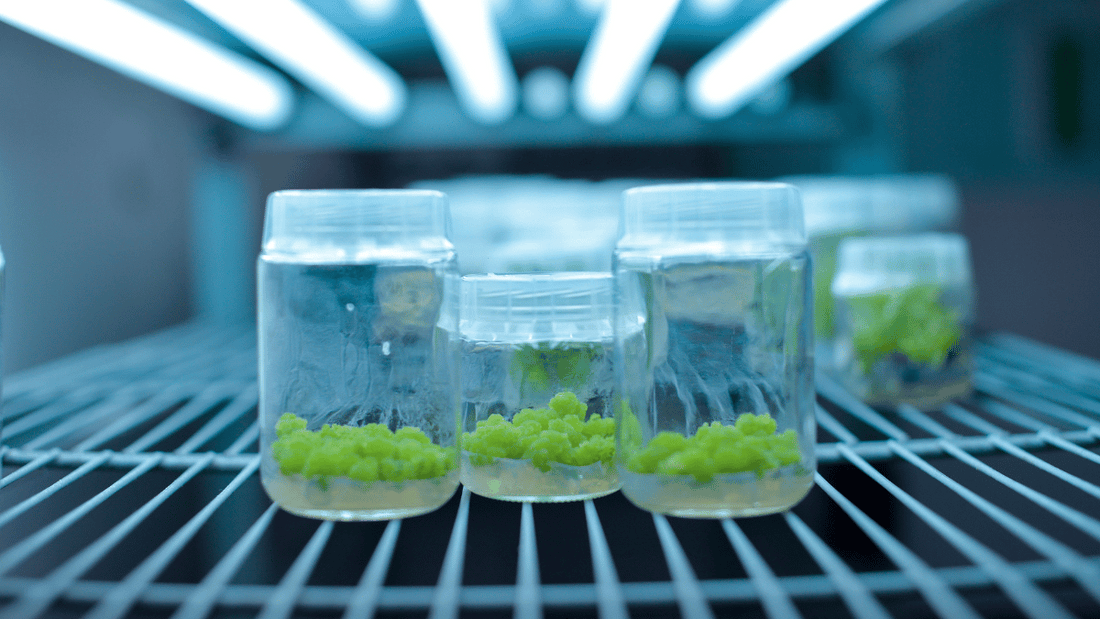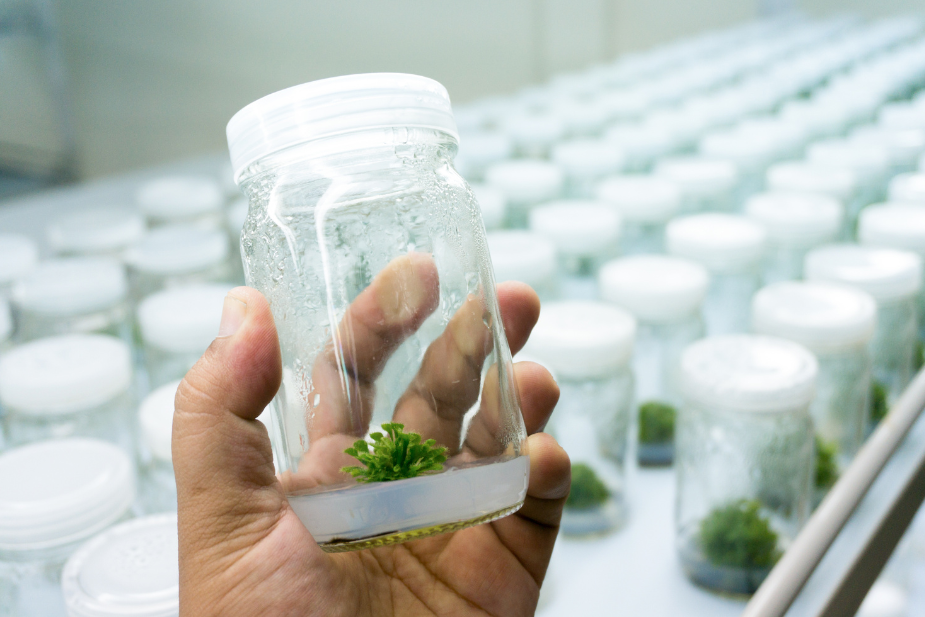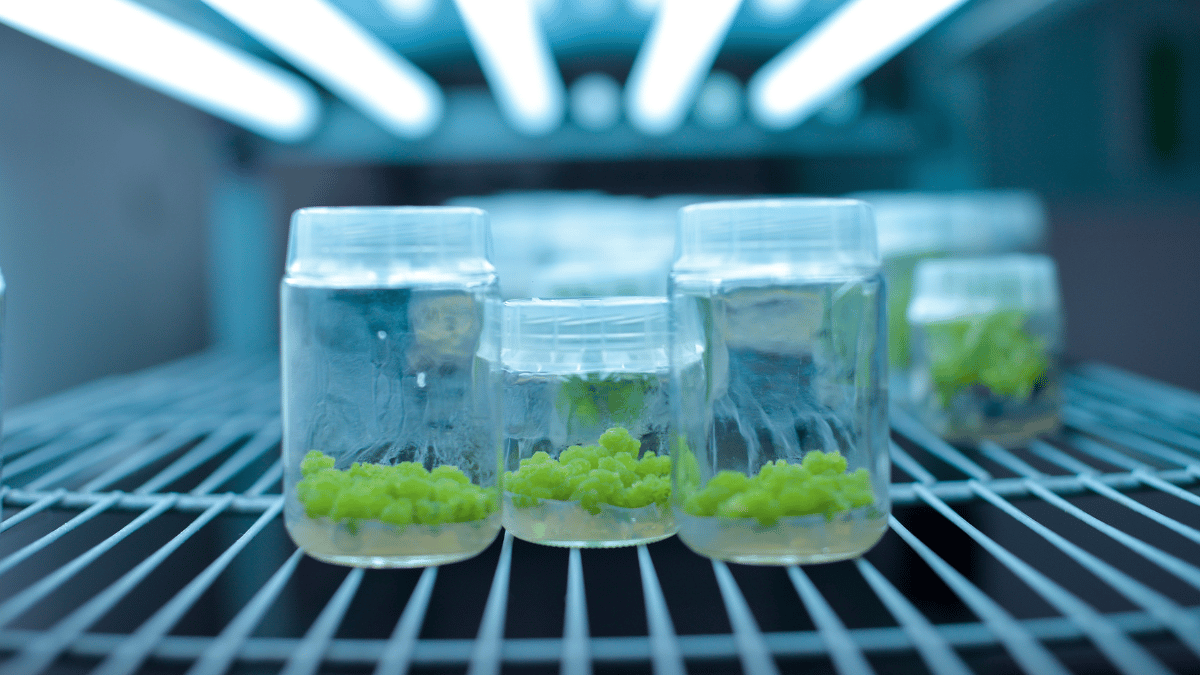
Callus Culture: Definition and Applications

Introduction
Tissue culture is not just one technique!
Yes, you heard right!
As you know, tissue culture is an advanced plant propagation technique that involves regenerating a whole plant in a lab environment using only a few tissues or even a single plant cell.
However, based on the explant used in the process and steps involved, the technique is of different types:
- Organ culture: It involves isolating plant parts (roots, stems, etc.) for a controlled study of their growth and function, preserving their natural structure. Methods like gels and grids support explants in a nutrient medium.
- Seed culture: Seed culture involves germinating seeds in a controlled environment, often on sterile media, for research or propagation purposes. It allows for the study of seed development and the promotion of disease-free plant starts.
- Embryo culture: Embryo culture bypasses seed dormancy or incompatible crosses by isolating and nurturing plant embryos in a controlled environment, promoting full development into seedlings.
- Suspension culture: Plant cell suspensions are created by transferring tissues (explants or callus) to liquid media and agitating them to break down the tissue into individual cells. These single cells can then be cultured using various techniques like filter paper rafts, microchambers, microdrops, or Bergmann's plating.
- Callus culture: Callus, an undifferentiated cell mass with plant regeneration potential, can be grown in labs from various plant tissues. These cultures require regular subculture (every 28 days) and vary in structure and growth based on the plant source, nutrients, and environment.

- Meristem culture: Meristem culture isolates rapidly dividing plant tissues (meristems) for rapid propagation and disease-free plant production. It targets the "growing tips" of plants to create healthy clones.
- Protoplast culture: Plant protoplasts are living plant cells without a cell wall. Scientists can remove the wall using physical or chemical methods, then fuse protoplasts from different species to create hybrid or genetically modified plants. These cells are cultured in lab environments using specialized techniques like hanging drops, microchambers, or soft agar matrix to develop into whole plants.
In this article, we elaborate more on the understanding of callus culture, how is it done, and its applications.
What Is Callus and Callus Culture?
Callus culture is a technique where a piece of plant tissue (explant) is grown in a nutrient medium under controlled conditions. This stimulates the explant to form a mass of undifferentiated cells called callus. Much like a plant stem cell, this callus has the potential to develop into a whole plant through plant regeneration.

However, callus cultures display significant heterogeneity. Researchers have classified them into distinct subgroups based on their macroscopic characteristics (observable without magnification).
For example, callus lacking signs of organ regeneration is typically categorized as friable or compact. Conversely, some callus exhibits varying degrees of organ formation, categorized as rooty callus, shooty callus, or embryonic callus depending on the organs they produce.
Notably, studies in the model plant Arabidopsis thaliana have revealed distinct gene expression profiles among different callus types This highlights the inherent diversity within the callus category, encompassing cells with varying degrees of differentiation potential.

Figure: An illustration of different types of calli.
Stages of Callus Culture
Callus culture is a powerful technique for manipulating plant cells and inducing them to form callus, an undifferentiated mass of cells. Here's a breakdown of the steps involved in this process:
1. Explant Selection and Collection:
The first step involves identifying and collecting suitable plant tissue for callus initiation. This tissue, called an explant, can come from various sources like stems, roots, leaves, flowers, fruits, or even seeds. Examples of tissues that readily form callus include storage parenchyma (cells for food storage), pericyclic cells (cells surrounding the vascular tissue in roots), cambial cells (cells responsible for growth), and mesophyll cells (photosynthetic cells in leaves).
2. Culture Media Selection and Preparation:
A specialized nutrient medium is essential for callus growth and development. The specific composition of this medium is crucial and will vary depending on the plant species and desired outcome. Typically, these media contain essential nutrients, sugars, hormones (auxin and cytokinin), and solidifying agents like agar.
3. Explant Surface Sterilization:
To prevent contamination by bacteria and fungi, the explant needs thorough sterilization before being introduced into the culture medium. This usually involves a multi-step process using disinfecting agents like ethanol and sodium hypochlorite.
4. Explant Preparation:
Depending on the explant source, it may require further processing before inoculation. This might involve cutting the explant into smaller pieces or removing any unwanted tissues.
5. Inoculation (Transfer) of Explant:
The sterilized explant is then carefully transferred to the prepared culture medium in a sterile environment. This process is often referred to as inoculation.
6. Culture Incubation:
The inoculated culture is placed in a controlled environment with optimal temperature, light, and humidity. This allows the explant to adjust and initiate callus formation.
7. Subculturing:
As the callus grows, it will eventually deplete the nutrients in the medium. To maintain healthy callus growth, a process called subculturing is performed. This involves transferring a portion of the actively growing callus to fresh culture medium.
8. Plant Regeneration (Optional):
In some cases, depending on the desired outcome, the callus can be further manipulated to regenerate whole plants. There are two main methods for regeneration:
- Organogenesis: This method involves inducing the callus to develop into shoots and roots, eventually leading to a complete plant.
- Embryogenesis: Here, the callus is induced to form somatic embryos, which can then germinate and develop into whole plants.

Applications of Callus Culture
Below are some of the common and widely known applications of callus culture:
In Vitro Germplasm Conservation
Callus cultures provide a valuable tool for preserving plant germplasm, especially for endangered species or those sensitive to traditional storage conditions. These cultures can be maintained in a controlled environment for extended periods, ensuring the survival of valuable genetic material.
Somatic Embryogenesis
This process involves guiding the development of callus into complete embryos, capable of germinating into whole plants. This technique offers a powerful tool for plant breeding and conservation efforts, particularly for recalcitrant species that are difficult to propagate traditionally.
For Secondary Metabolite Production
Callus culture is a well-established technique for in vitro manipulation of plant cells. It involves the induction of dedifferentiation in plant explants, typically leaves, on culture media supplemented with high auxin concentrations or a combination of auxin and cytokinin.
This approach offers a valuable alternative for the production of secondary metabolites, particularly those preferentially localized in leaves.
The process involves establishing callus cultures from leaf explants under controlled laboratory conditions. The composition of the culture medium plays a crucial role – a specific balance of auxin and cytokinin hormones is essential to trigger dedifferentiation and subsequent cell proliferation.
During the callus growth cycle, the production of secondary metabolites often peaks during the stationary phase. Callus cultures are harvested at this specific stage to maximize the yield of the desired medicinal compound. Following harvest, the callus is dried and subjected to extraction techniques.
The resulting extract then undergoes analysis using high-performance liquid chromatography (HPLC), liquid chromatography-mass spectrometry (LC-MS), or other appropriate methods to identify and quantify the target compound.
Furthermore, for large-scale production and yield optimization, research often employs suspension cultures. These cultures involve transferring the callus into a liquid medium within a shake flask or a bioreactor.
This allows for improved aeration, mass transfer, and overall culture homogeneity, ultimately leading to a more efficient production of the desired metabolite.

Plant Cell Technology Offers Expert Tissue Culture Solutions
Are you passionate about plants and fascinated by the potential of plant tissue culture? Plant Cell Technology understands your aspirations and is here to be your trusted partner in building a thriving home lab.
We recognize that setting up a home lab and mastering the intricacies of plant tissue culture can be challenging. However, with the right tools, knowledge, and support, you can cultivate success and unlock a world of possibilities.
How Plant Cell Technology Empowers You:
- Essential Supplies: Access a comprehensive range of high-quality media, agar, gelling agents, culture vessels, and more, ensuring you have the right tools for every step.
- Expert Knowledge: Gain confidence through our informative resources:
- Comprehensive blog articles: Explore topics from basic principles to advanced techniques.
- Master Classes: Immerse yourself in in-depth sessions led by experienced instructors, gaining valuable hands-on experience and mastering advanced techniques.
- Consultation Services: Get personalized advice and tailored solutions from our experts, ensuring your home lab journey flourishes.
- Community Connection: Join our vibrant community forum to connect with fellow enthusiasts, share experiences, and stay updated on the latest advancements.
Blog Categories
View by Level
Popular Blogs

DKW Media: Definition, Use, and Applications
Introduction In vitro plants need nutrients to grow in a lab environment. These media are composed of micronutrients and macronutrients...
Read More
Callus Culture: Definition and Applications
Introduction Tissue culture is not just one technique! Yes, you heard right! As you know, tissue culture is an advanced...
Read MoreSubscribe to Our Newsletter








Join the conversation
Your email address will not be published. Required fields are marked